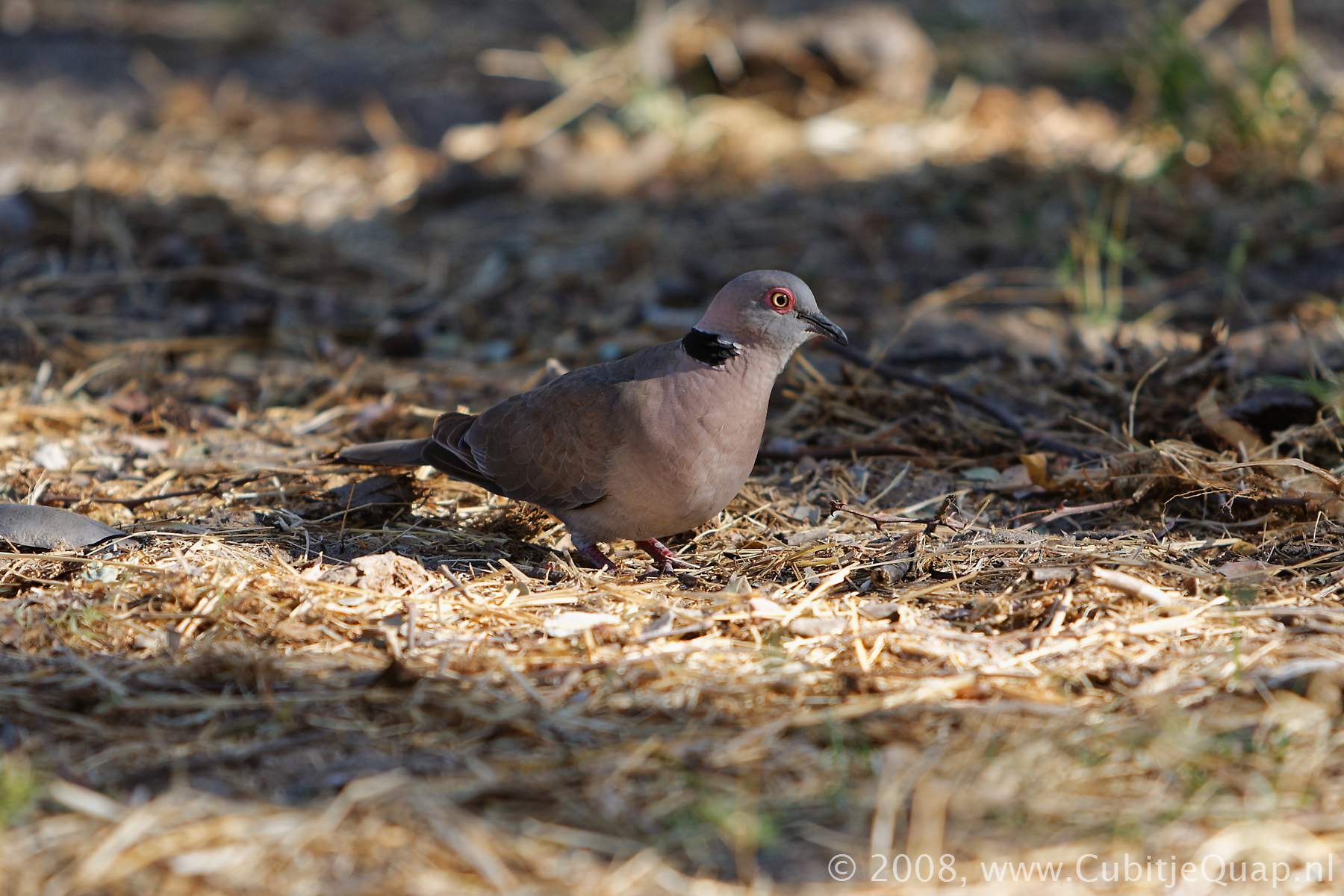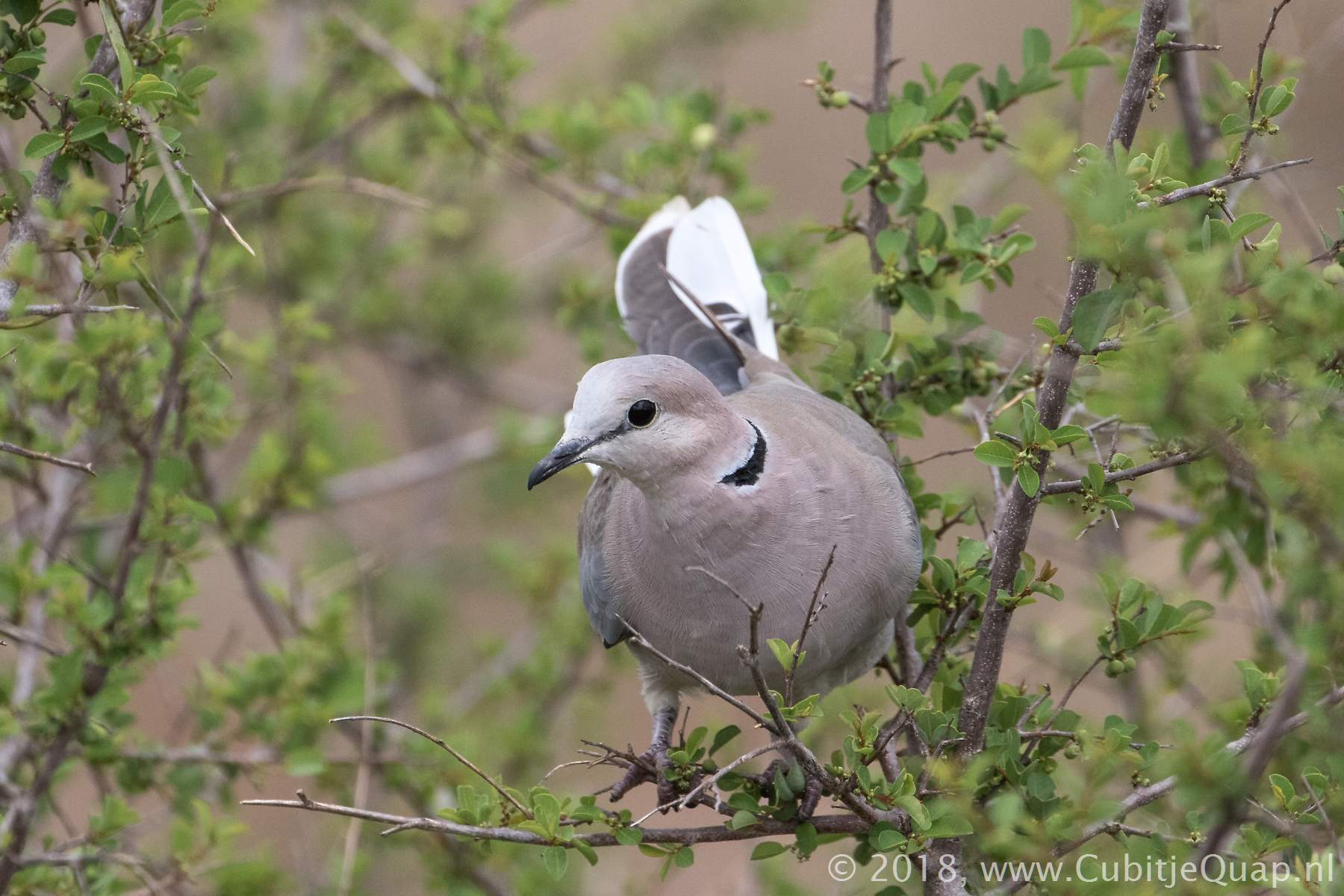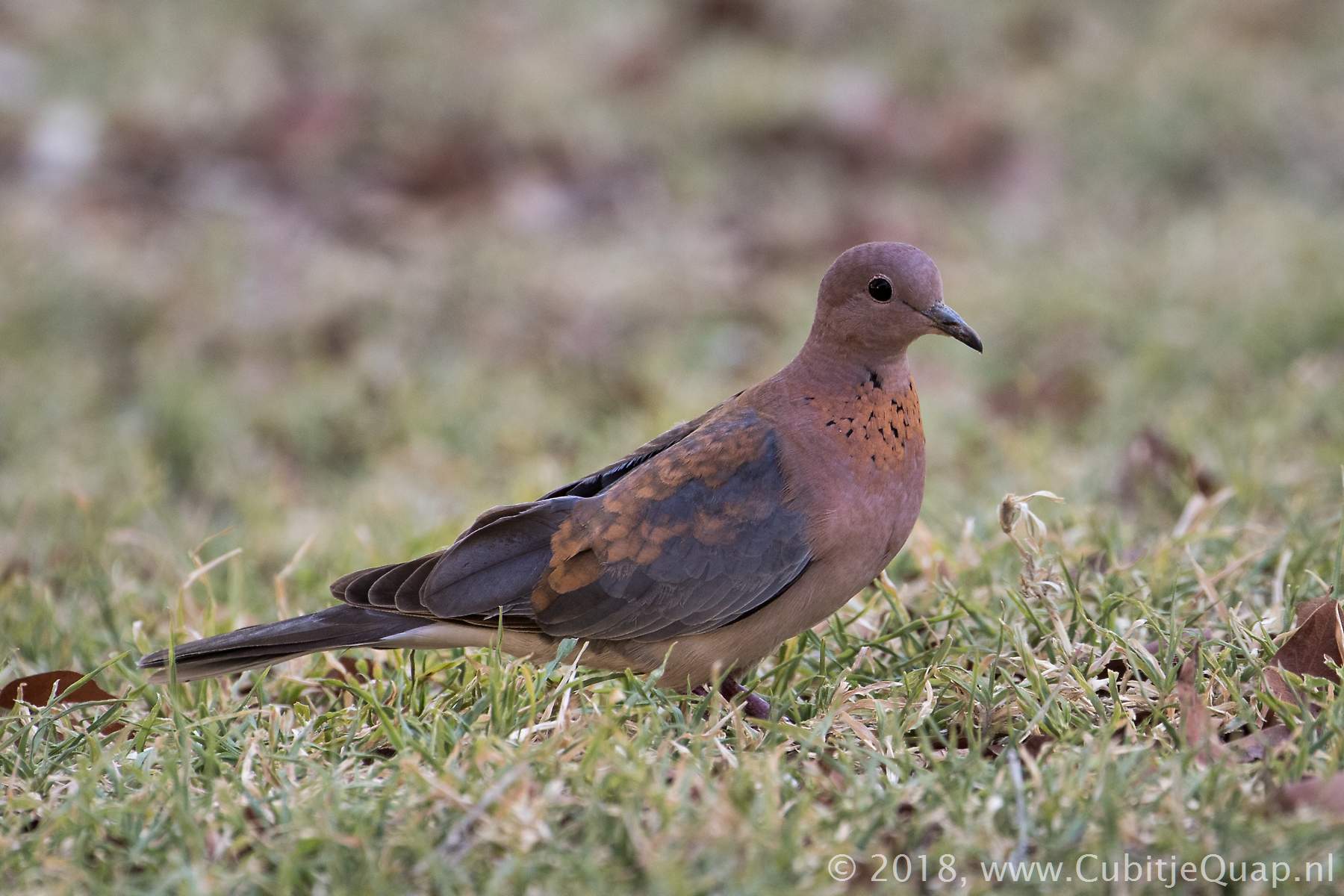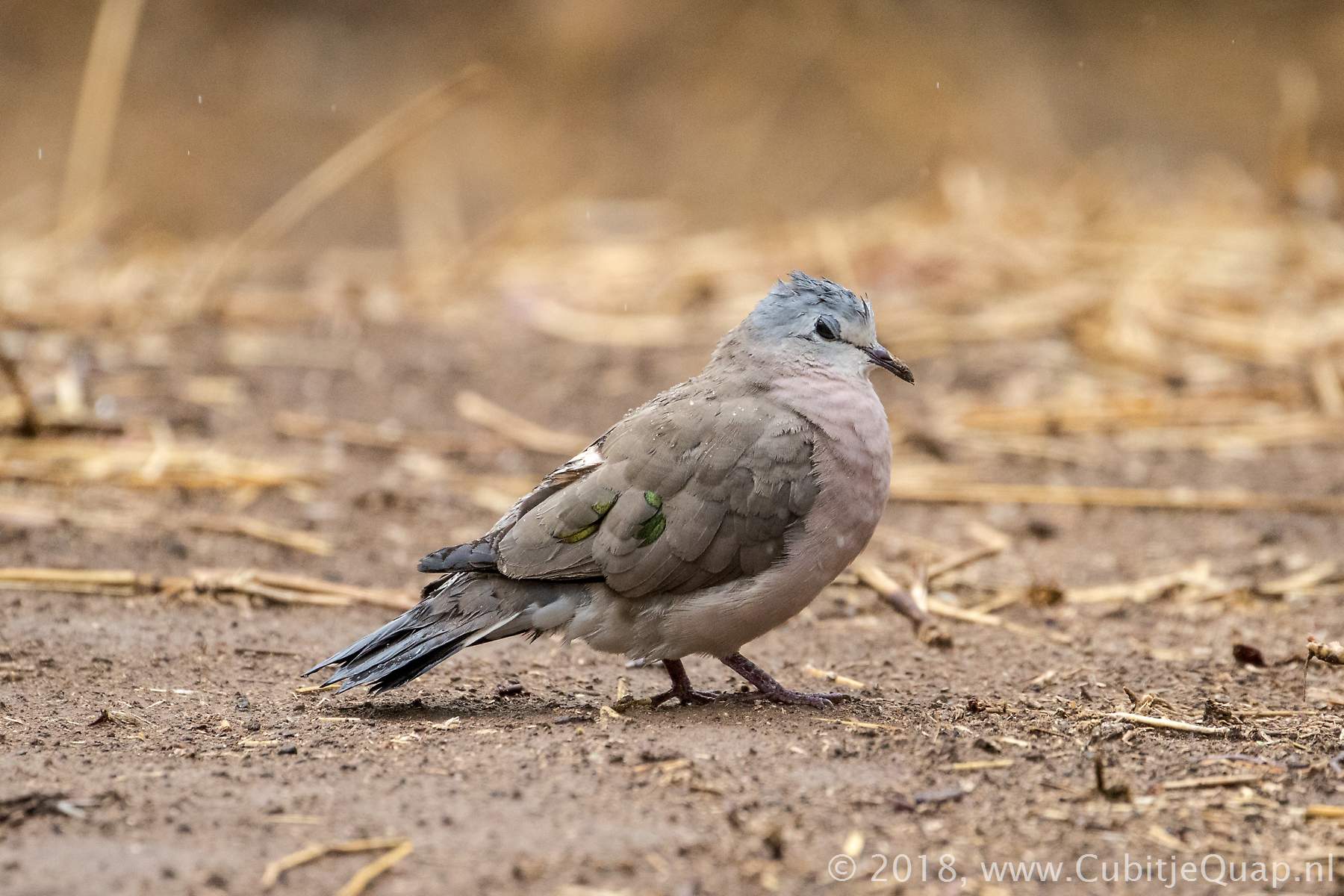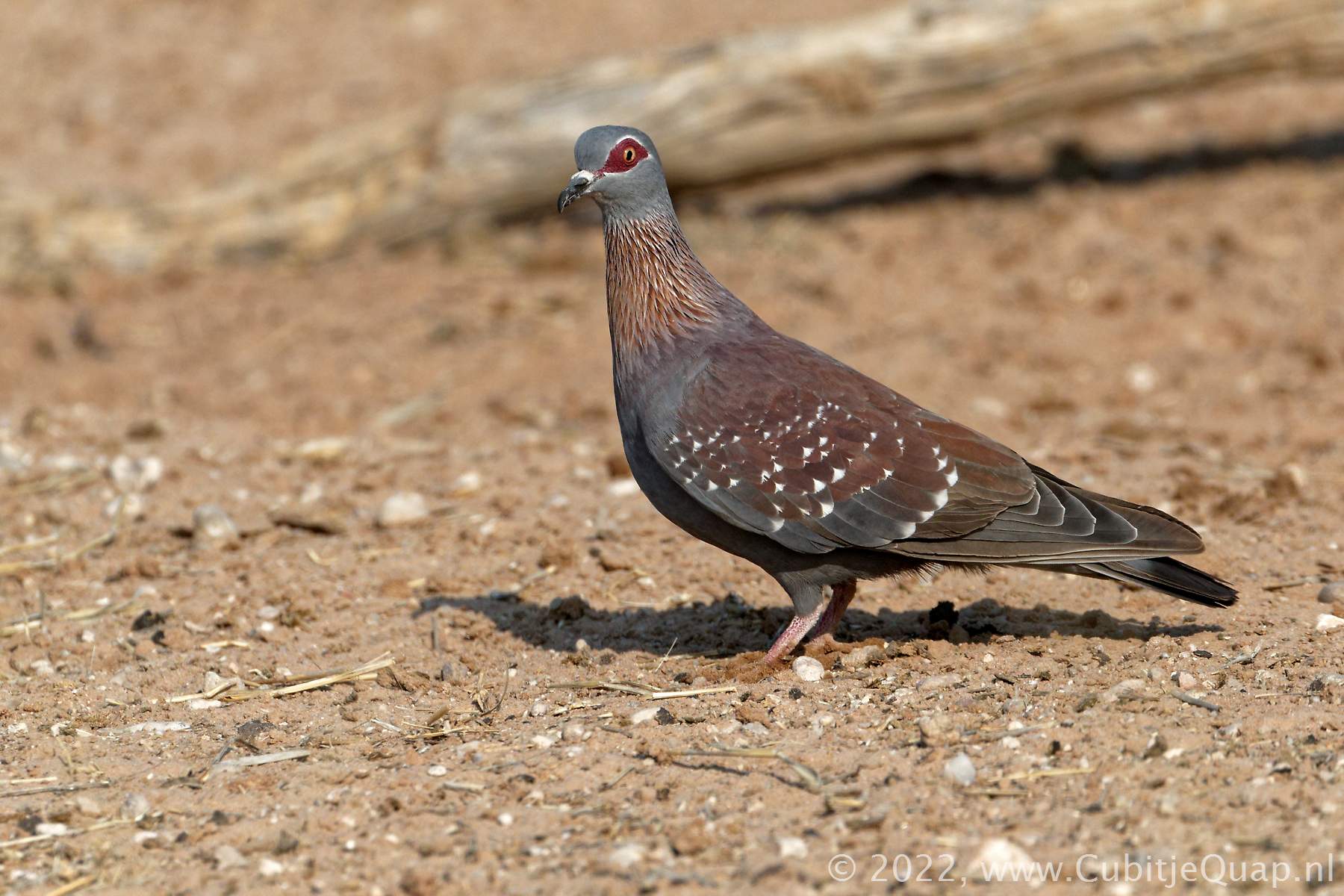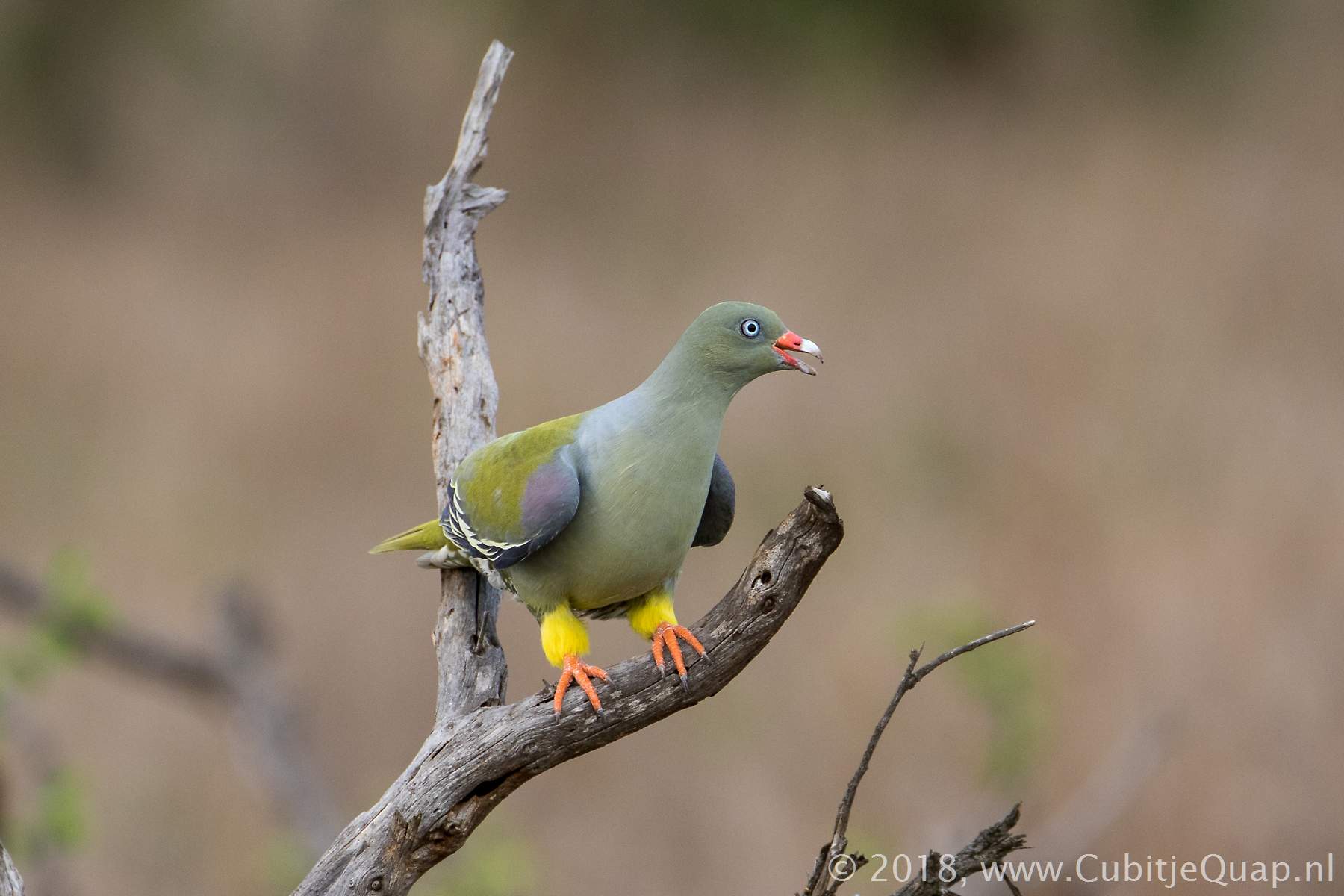Doves and pigeons Information page
Description
Common, rather plump, granivorous and frugivorous birds. Strickly monogamous. Breeding may occur throughout the year, but is most common during spring and summer.Nest a fragile, shallow saucer of twigs. Males usually gather nesting material while females builds. Chicks are initially exclusively fed protein- and fat-rich crop milk [pigeon's milk] from sloughing of oesophageal cells. Nests may be reused for subsequent breeding attempts.
Scientific names
Columba = pigeon or doveOena = wild pigeon
Streptopelia = collared dove
Spilopelia = spotted dove
Treron = timid
Turtur = turtle-dove
Doves
Most dove species are terrestrial seed eaters and when drinking doves suck the water up and van swallow without having to tilt the neck. Most species are gregarious, especially concentrated at food sources or at water. When foraging, they walk rather than hop, and although terrestrial, can perch well because of a well-developed hind toe. They have a large crop.Their heavy bodies with long, pointed wings result in a fast and direct flight pattern. They can often be seen sunbathing on the ground with the wings spread and tail fanned.
They roost alone or in pairs when breeding. They are monogamous and territorial. They nest on fragile stick platforms. Nests are strengthened by faecal waste throughout incubation and brooding.
Incubations starts before the clutch is complete, but the eggs tend to hatch at intervals at the same day. The effshells are removed from the nest by the adults.
When the nest is threathened, the adults will use injury-feighning (broken wing) distraction displays.
Pigeons
Most pigeon species feed primarily on on fruits, feeding primarily in trees and they are generally larger than doves.They are prone to flocking and may roost alone or communally. They are monogamous and territorial when nesting. Pairs will sometimes allopreen. Both sexes will build the nest, with twigs being broken off trees. The nest is basically a frail stick platform that becomes more stable during nesting, as it is bonded by the faeces that spill through the nest.
They usually lay 2 eggs and incubation is mostly undertaken by both sexes, male usually during the day and female at night. It is started before clutch completion.
The eggshells are generally left on the nest and after some time are knocked to the ground.
Interesting links
Wikipediafatbirder.com

